Macadamia nuts are delicious, and they enjoy popularity for their crunchy, buttery taste.
In short, these are some of the tastiest common nuts you can buy.
However, with all the beneficial health claims surrounding them, are macadamia nuts actually good for you?
Or are they over-rated?
This article examines the nutritional values, benefits, and drawbacks of macadamia nuts.
What Are Macadamia Nuts?
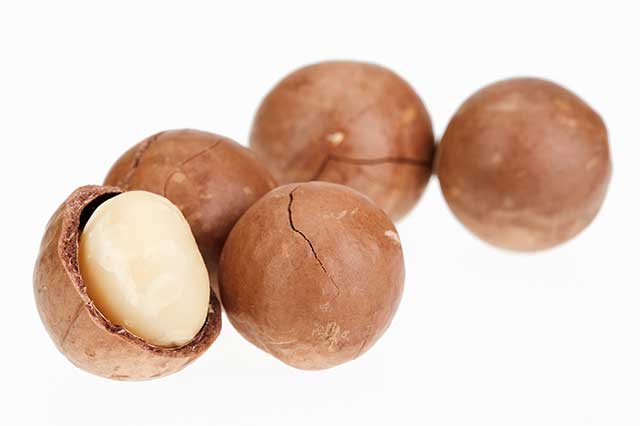
Macadamia nuts, otherwise known as “Queensland nut” and “Hawaii nut” are a type of tree nut that originally came from Australia (1).
While these nuts are native to Australia, they now grow throughout the world, particularly in South Africa, South America, and the United States.
In the United States, macadamia nuts grow in Hawaii and the states of California and Florida (2).
Macadamias grow on four different species of large evergreen trees known as (3);
- Macadamia integrifolia
- Macadamia jansenii
- Macadamia ternifolia
- Macadamia tetraphylla
The first three of these four species produce similar yet slightly different edible nuts.
However, the nuts from the fourth species—macadamia tetraphylla—contain so many cyanogenic glycosides that they are highly toxic and unsuitable for human consumption.
Macadamias are renowned for their high fat content, and they have a crunchy texture and a light buttery taste.
Nutrition Facts
The following data shows the nutritional values for macadamia nuts per ounce (28-gram) serving (4).
One ounce is approximately 12 nuts.
Calories and Macros
First of all, here are the calorie and macronutrient values;
| Calories/Macro | Amount (kcal/grams) |
|---|---|
| Calories: | 201 kcal |
| Carbohydrate: | 4 g |
| Fiber: | 2.4 g |
| Sugars: | 1.3 g |
| Fat: | 21.2 g |
| Saturated Fat: | 3.4 g |
| Monounsaturated Fat | 16.5 g |
| Polyunsaturated Fat | 0.4 g |
| Omega-3: | 58 mg |
| Omega-6 | 363 mg g |
| Protein | 2.2 g |
As shown in the table, macadamia nuts are primarily a source of fat.
Unlike most other nuts, the polyunsaturated fat content is very low, and the fat is mainly monounsaturated.
Macadamia nuts are low in carbohydrate and contain even smaller amounts of protein.
Vitamins
| Vitamin | Amount (% DV) |
|---|---|
| Vitamin B1 | 22 % |
| Vitamin B6 | 4 % |
| Vitamin B2 | 3 % |
| Vitamin B3 | 3 % |
| Vitamin B5 | 2 % |
| Vitamin C | 1 % |
| Vitamin E | 1 % |
| Folate | 1 % |
Macadamia nuts supply a good amount of vitamin B1.
However, they are relatively low in other vitamins.
Minerals
| Vitamin | Amount (% DV) |
|---|---|
| Manganese | 58 % |
| Copper | 11 % |
| Magnesium | 9 % |
| Iron | 6 % |
| Phosphorus | 5 % |
| Potassium | 3 % |
| Calcium | 2 % |
| Zinc | 2 % |
| Selenium | 1 % |
As the table shows, macadamia nuts offer a range of minerals, and they are especially high in manganese.
Benefits of Macadamia Nuts
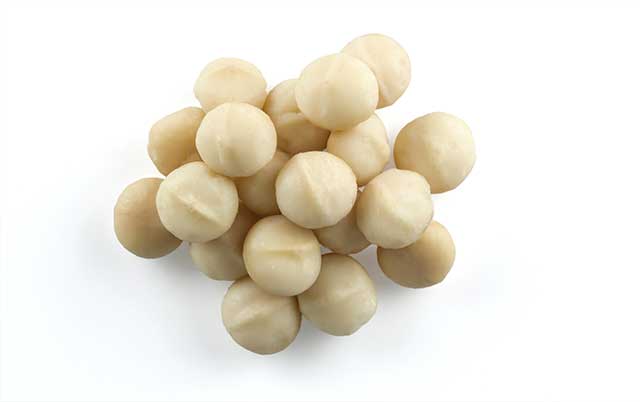
In this section, we will take a balanced look at the benefits of macadamia nuts.
1) Substantial Source of Monounsaturated Fatty Acids
Monounsaturated fat is the predominant fat in macadamia nuts, and the main fatty acid (representing about 60% of macadamia’s fat content) is oleic acid.
Notably, a wide range of recent research on oleic acid has shown it to have various health benefits.
For one thing, studies suggest that a higher intake of oleic acid may increase insulin sensitivity (5, 6).
Additionally, a low-intake of oleic acid is associated with diabetes complications such as retinopathy in type 2 diabetes patients (7).
However, we cannot discount that whatever is replacing the fats (e.g. refined carbohydrate) may be the problem rather than the low oleic acid.
2) Rich In Manganese
Manganese is the standout nutrient in macadamia nuts, and just one ounce (28-grams) of the nuts contains 58% of the RDI for this mineral (8).
In other words, just a small handful of nuts provides more than half the daily recommended intake.
Manganese plays a vital role in the skeletal system, and it may help to strengthen and protect bone density (9, 10).
3) A Good Source of Vitamin B1
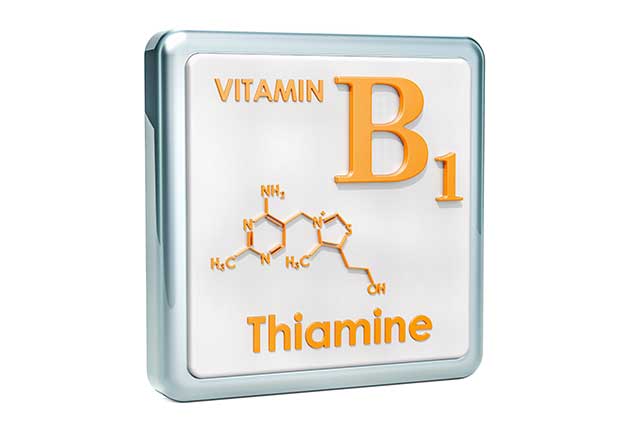
The most concentrated vitamin in macadamia nuts is vitamin B1.
Vitamin B1 is otherwise known as thiamin, and it plays a vital role in energy metabolism. Specifically, thiamin has the task of converting carbohydrates into energy (11).
Additionally, research findings suggest the vitamin may have a range of further potential benefits.
For instance, one randomized controlled trial shows that higher vitamin B1 intake significantly improves blood glucose levels in type 2 diabetes patients (12).
A further randomized trial demonstrates that supplementing with thiamin “significantly decreases” blood glucose levels in hyperglycemic patients (13).
An ounce (28 grams) of macadamia nuts offers 22% of the daily value for vitamin B1.
4) Improve Blood Sugar Control
Macadamia nuts contain a small amount (4 grams per ounce) of dietary carbohydrate.
Also, 60% of this carbohydrate (2.4 grams) is fiber.
In other words, macadamia nuts will have a minimal impact on the glycemic response (blood sugar levels).
On this note, a systematic review of 12 randomized trials confirmed that a 56-gram daily serving of macadamia nuts has no impact on blood glucose or insulin levels (14).
Furthermore, a systematic review of 49 randomized controlled trials found that daily tree nut consumption—including macadamia nuts—led to “modest decreases” in fasting blood glucose (15).
As a result, macadamias are a good snack choice for anyone wishing to keep their blood sugars stable.
5) May Help To Reduce Cardiovascular Risk Factors
First of all, population studies find that nut consumption correlates with a lower risk of cardiovascular disease and cardiovascular mortality (16, 17, 18).
While correlation does not infer causation, large-scale studies on nuts do consistently find this to be the case.
Additionally, randomized controlled trials have demonstrated that daily macadamia nut consumption decreases LDL levels over a period of several weeks. Some studies also show that HDL levels increase (19, 20).
Although the idea that LDL is “bad” and HDL is “good” may be simplistic, lower LDL and higher HDL tends to be associated with cardiovascular benefit (21).
Drawbacks
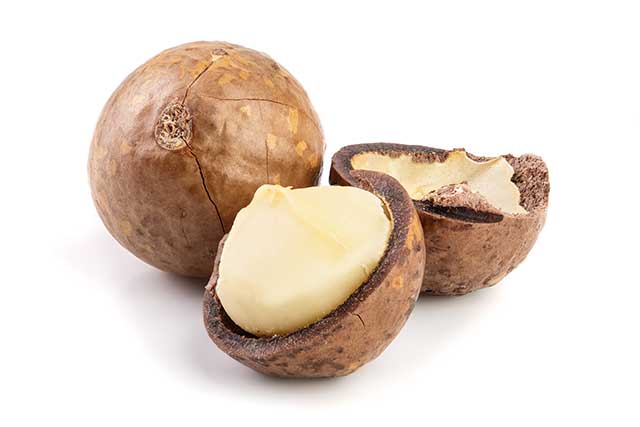
Although macadamia nuts are a reasonably nutritious whole food, they do have a few drawbacks too.
Here is a quick overview.
1) Not a Substantial Source of Vitamins and Minerals
Although macadamia nuts are rich in manganese and vitamin B1, they are relatively low in nutrients apart from this.
The tables below show the top six most concentrated nutrients in macadamia nuts compared to almonds and brazil nuts (4, 23, 24).
Macadamia Nuts
| Nutrient | Amount (% RDI) |
| Manganese | 58 % |
| Vitamin B1 | 22 % |
| Copper | 11 % |
| Magnesium | 9 % |
| Iron | 6 % |
| Phosphorus | 5 % |
Almonds
| Nutrient | Amount (% RDI) |
| Vitamin E | 37 % |
| Manganese | 32 % |
| Magnesium | 19 % |
| Vitamin B2 | 17 % |
| Copper | 14 % |
| Phosphorus | 14 % |
Brazil Nuts
| Nutrient | Amount (% RDI) |
| Selenium | 767 % |
| Magnesium | 26 % |
| Copper | 24 % |
| Phosphorus | 20 % |
| Manganese | 17 % |
| Vitamin B1 | 12 % |
As we can see, although macadamia nuts are a good source of several nutrients, they do not offer the same nutrient density as other nuts.
For larger doses of vitamins and minerals, almonds and Brazil nuts are both excellent options.
2) Lower In Protein Than Other Nuts
Since macadamia nuts are primarily a source of fat, they are lower in protein than other nuts.
While this isn’t specifically a negative point, it is worth being aware of since some people eat nuts for a source of protein.
The table below shows how macadamia nuts compare to several other nuts for protein content per ounce (28 grams);
| Nut | Protein (grams) |
| Almonds | 5.9 g |
| Brazil Nuts | 4 g |
| Hazelnuts | 4.2 g |
| Macadamia Nuts | 2.2 g |
| Pecans | 2.6 g |
| Walnuts | 4.3 g |
Macadamia nuts have the lowest protein content among common nuts.
There are better choices for those wishing to get a little extra protein.
3) Very High In Fat and Calories
With more than 200 calories and 21 grams of fat per ounce, macadamia nuts are very energy-dense.
Again, this is not necessarily a bad thing, and overall the nuts are a healthy choice.
The problem: the nuts taste delicious, and just a small handful can seem like it isn’t enough.
In short, it is easy to overdo it with macadamia nuts, and the calories can easily add up.
Raw or Roasted Macadamia Nuts: Which Are Healthier?
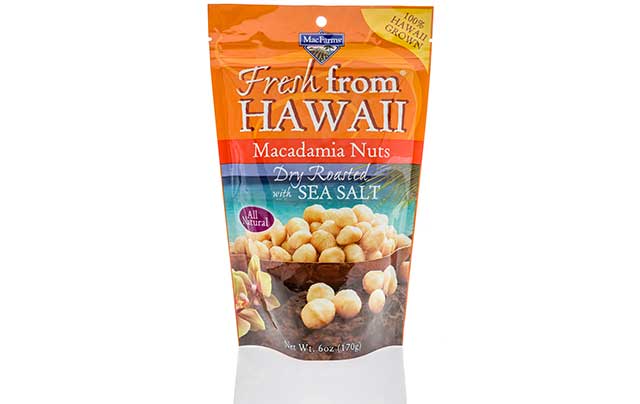
Lots of people suggest that raw macadamia nuts are much superior to the roasted nuts.
However, is there any truth to this?
Nutrient Loss
Firstly, all food generally deteriorates a little during the cooking process and loses nutritional value.
That said, these changes are small, and studies show that roasting nuts only creates minimal changes (25).
Overall, roasted macadamia nuts likely retain near enough the same nutrient profile as the raw version.
Oxidation Issues
Whenever we heat fatty acids, a certain amount of oxidation will occur.
With pure polyunsaturated fats (such as vegetable oil) which have low oxidative stability, it is likely that moderate amounts of oxidation will occur.
However, fatty acids in whole food structures like meat, fish, olives, and nuts tend to be much more resistant to oxidation due to the support nutrients they contain.
With that being said, studies do show that a low amount of oxidative products form when roasting nuts. The higher the temperature and the longer the cooking time, the more oxidation that will occur (26, 27).
Since macadamia nuts are mainly monounsaturated fat and contain very low amounts of polyunsaturated fat, they are quite heat-stable.
It is also unclear if a rise in oxidation products in the nuts would have any negative effects.
Salmonella in Raw Macadamia Nuts
Raw macadamia nuts may be slightly superior to roasted nuts nutritionally.
On the other hand, the chance of bacterial contamination is higher.
Realistically, the risk of this is very low, but salmonella contamination has been a problem with raw nuts—including macadamia nuts—over the past several years.
In one study, an analysis of 3,656 samples found that 32 contained salmonella (28).
Raw and Roasted Macadamia Nuts Are Both Healthy
Overall, the differences between the raw and roasted nuts probably aren’t worth overthinking.
If the raw and roasted versions were available for a similar price, I’d personally choose the raw macadamia nuts.
However, it is not a big issue, and both are healthy choices.
Final Thoughts
Macadamia nuts may not be the most nutritious nut in the world, but they are arguably the tastiest.
These nuts can also play a beneficial role in the diet, especially when replacing poorer snack choices such as potato chips.
With sensible portion control, this delicious nut is a healthy choice that offers several health-supportive nutrients.
For more information on different nuts, see this guide to the benefits of pecans or check out the science-backed benefits of walnuts.

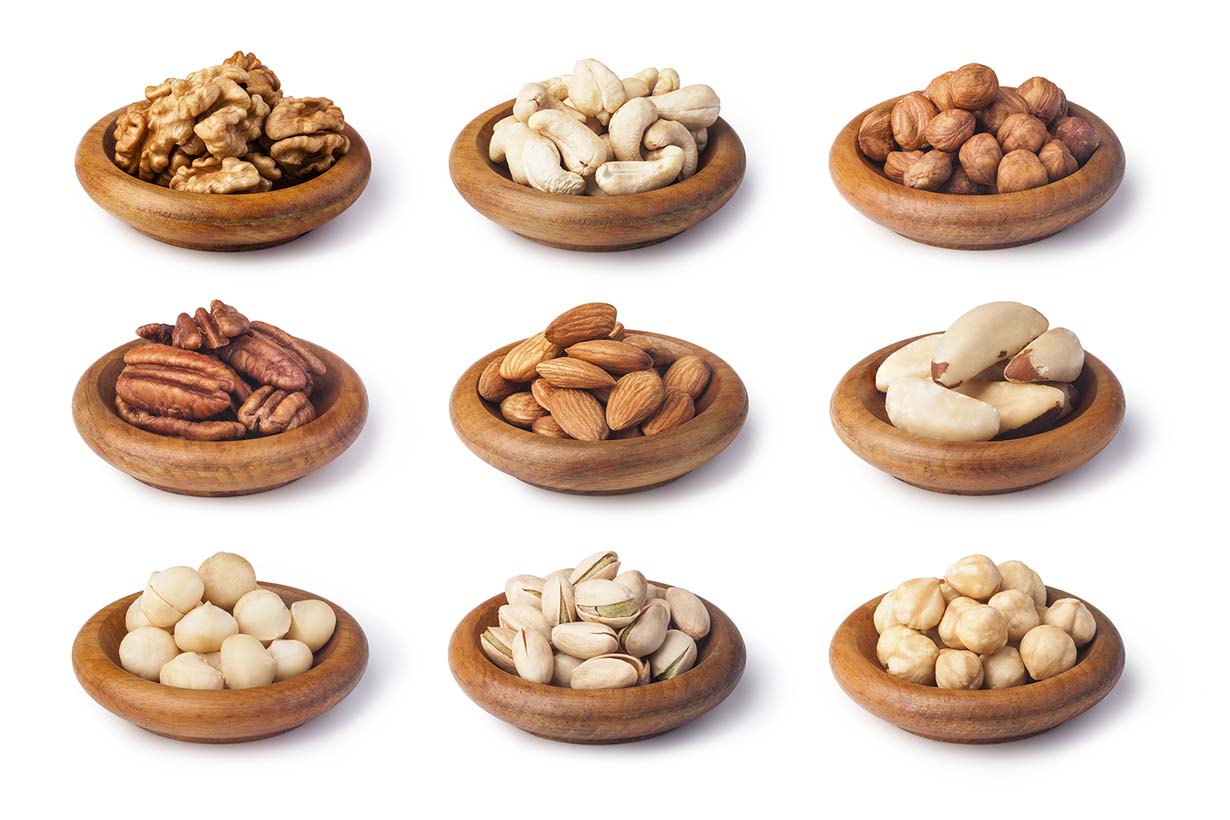
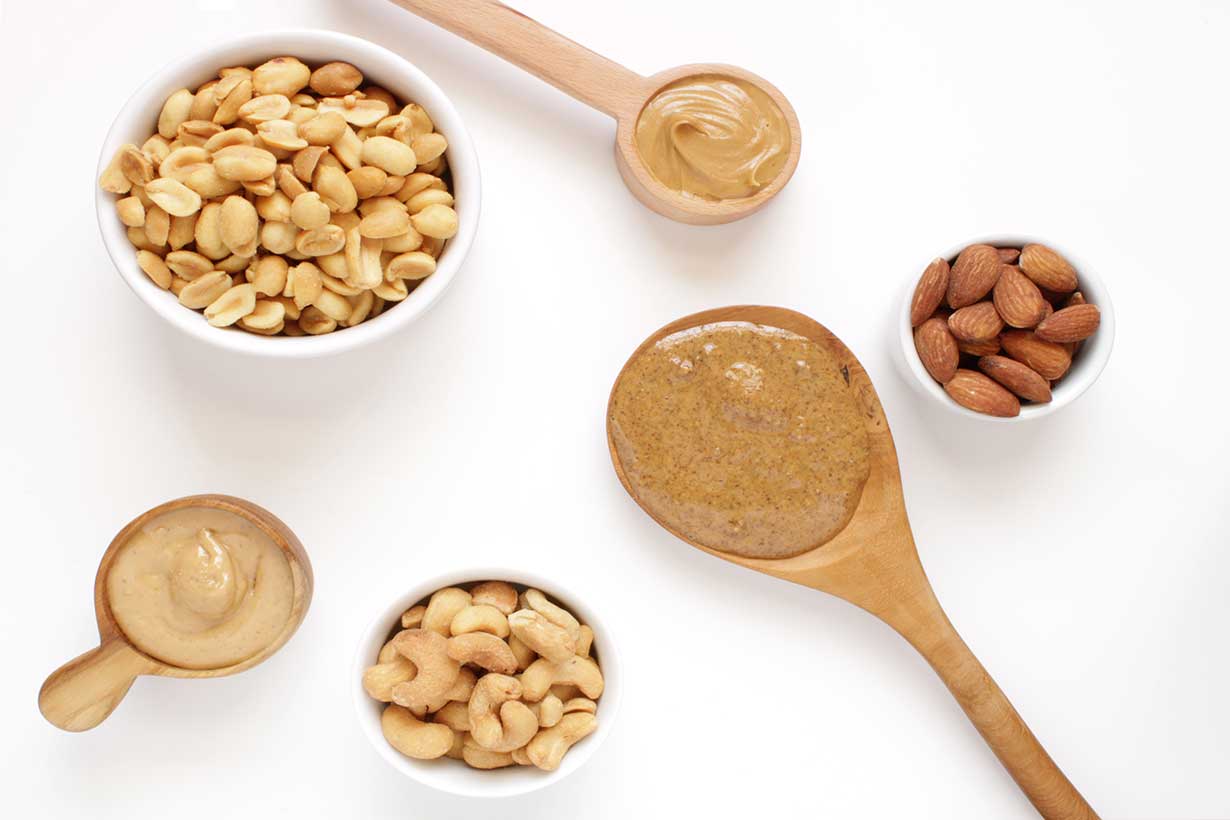

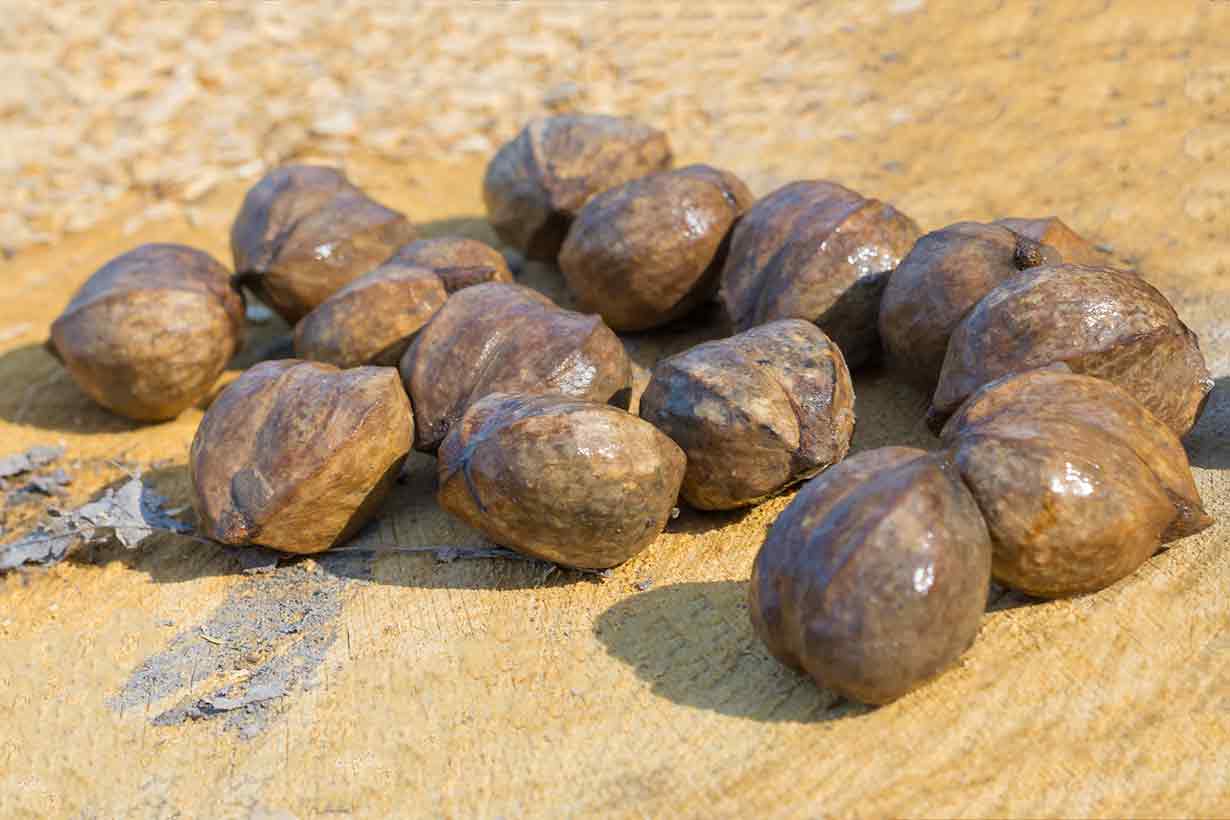
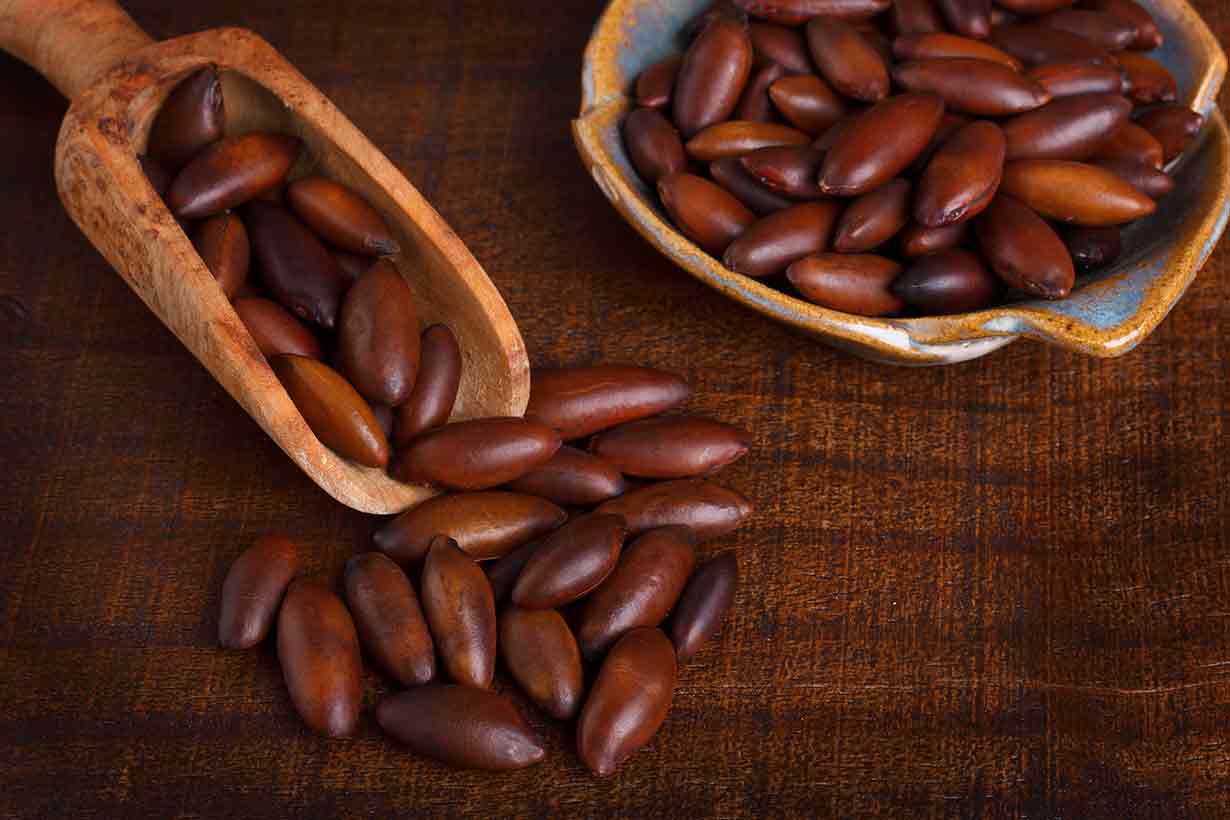
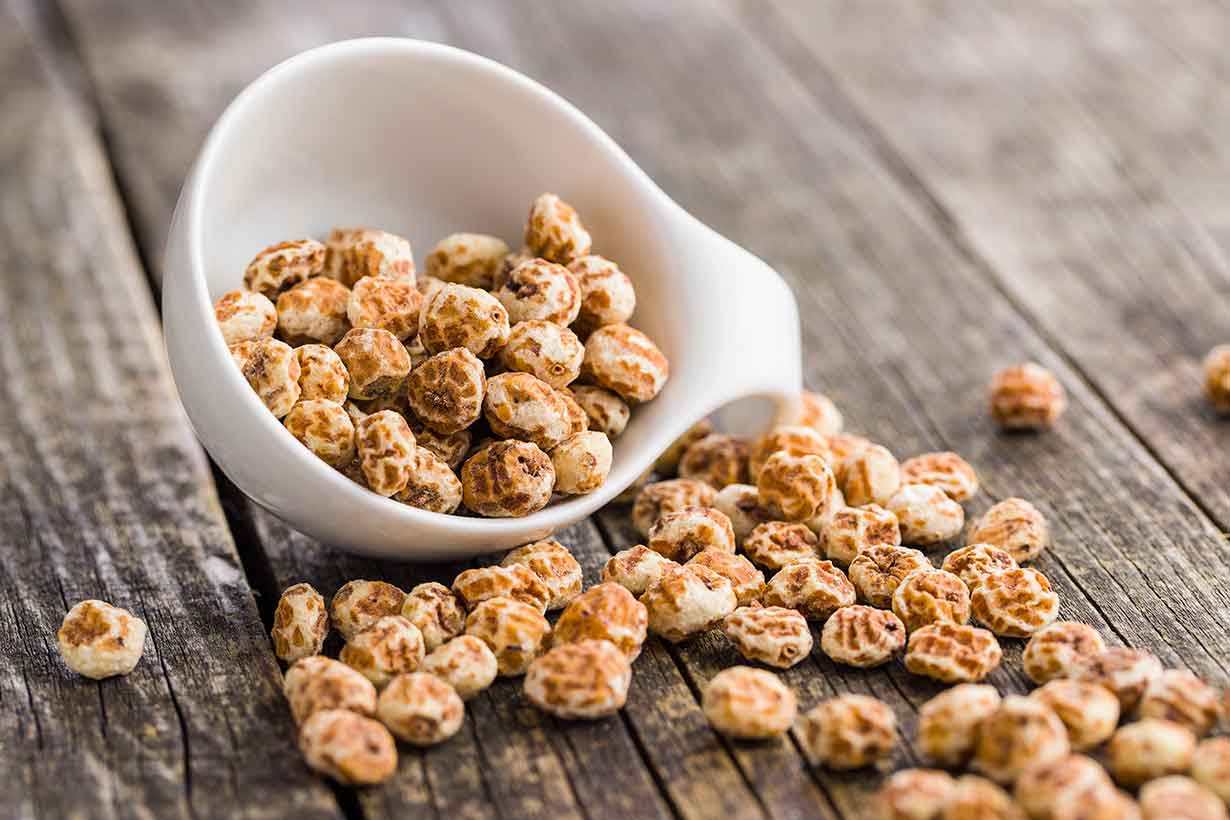
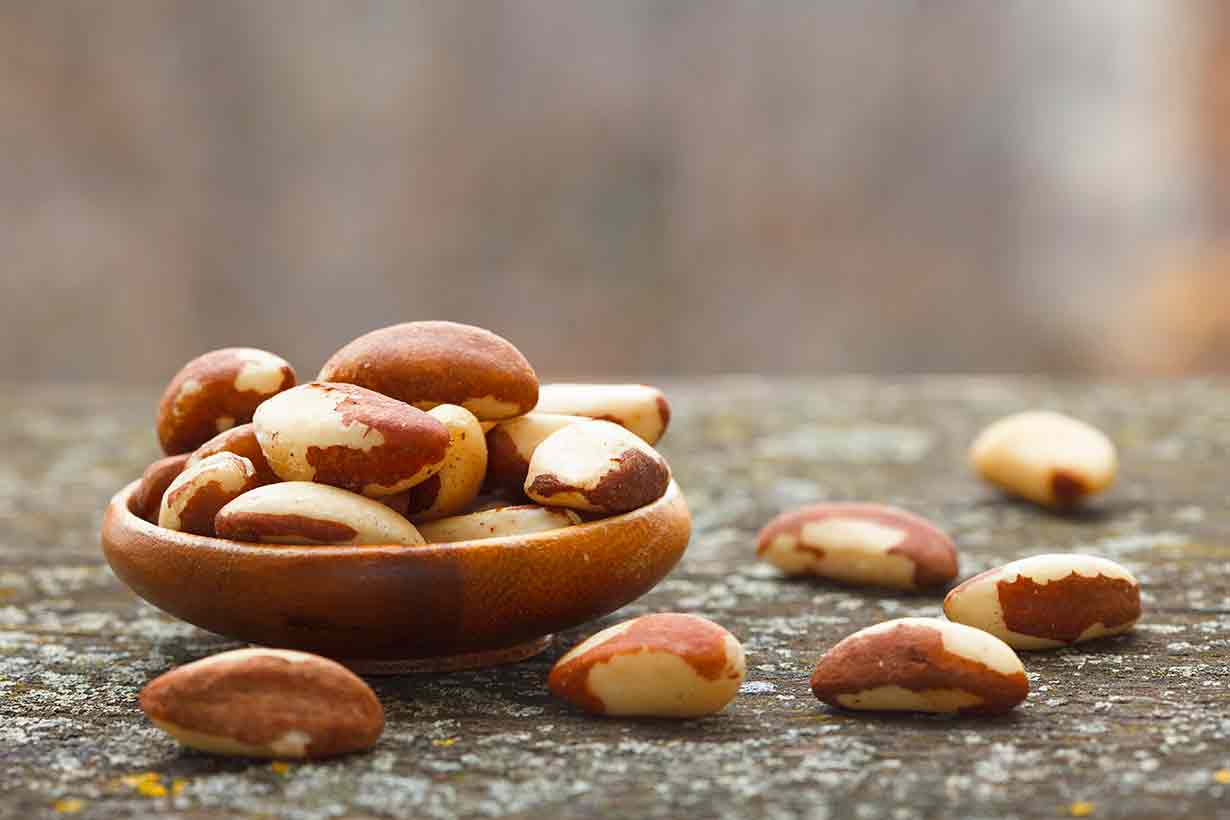
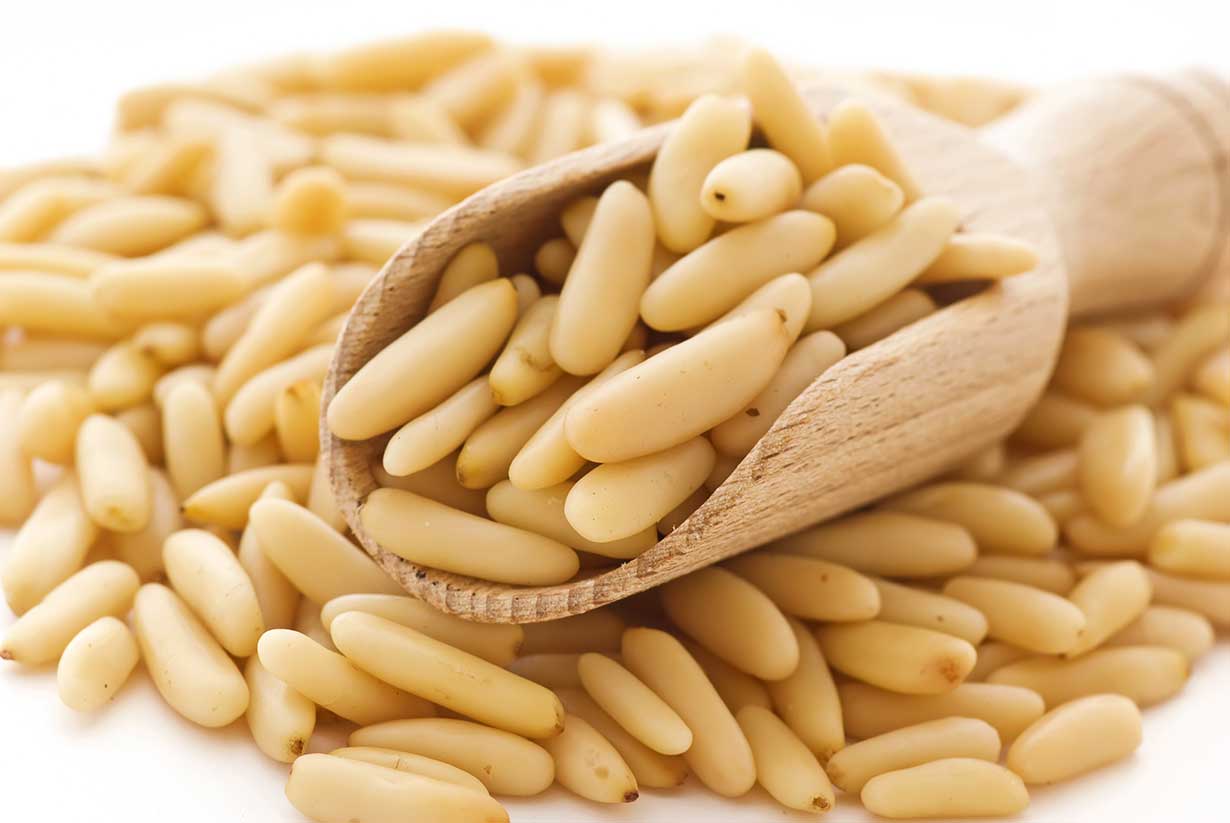
Excellent article! Just one thought- it would be less confusing to give nutritional values per 100 gram as you usually do…
Thanks, Eryl!
Ah, confusing… I prefer the ‘per 100 grams’ but I changed it to ‘per serving’ this time because some people said that would be easier. I guess it is one of those 50/50 things! Or maybe a UK/US divide.